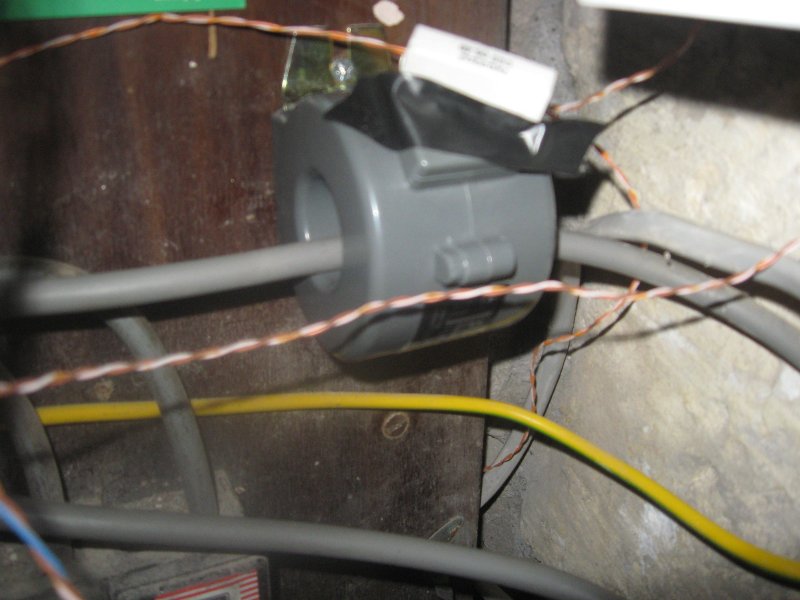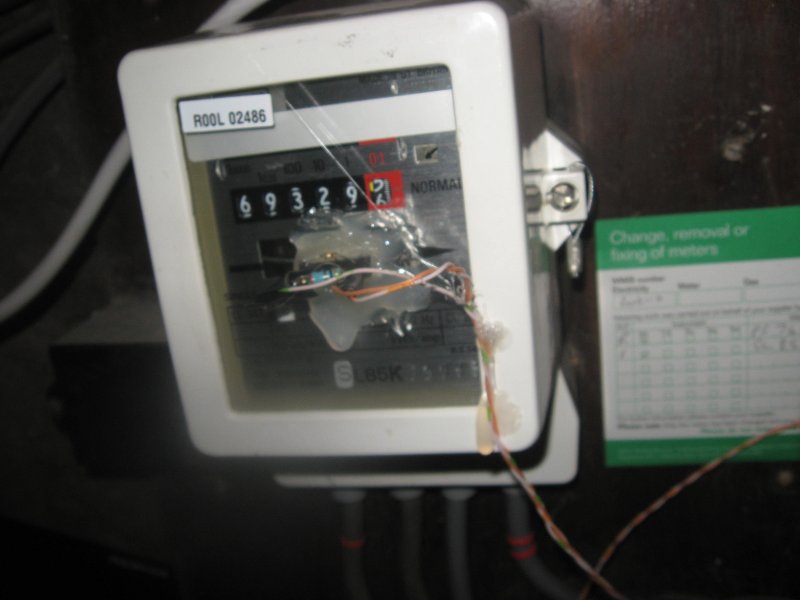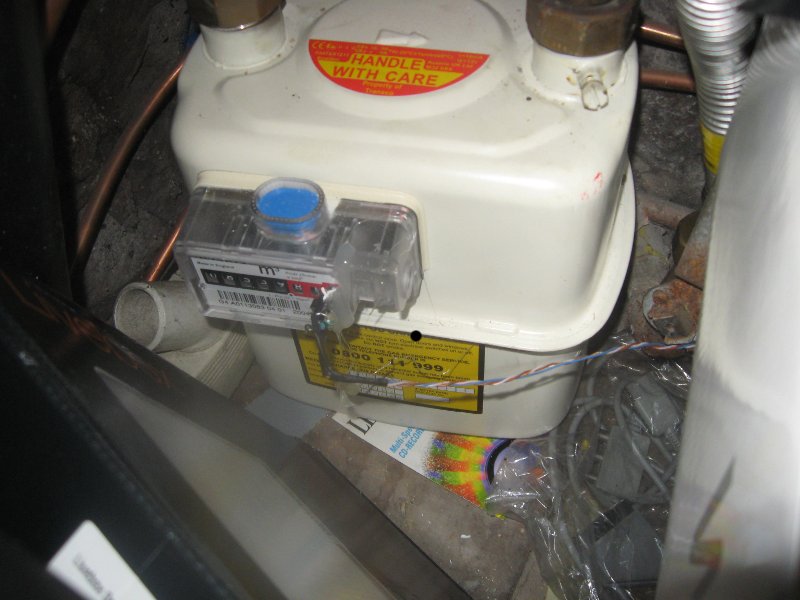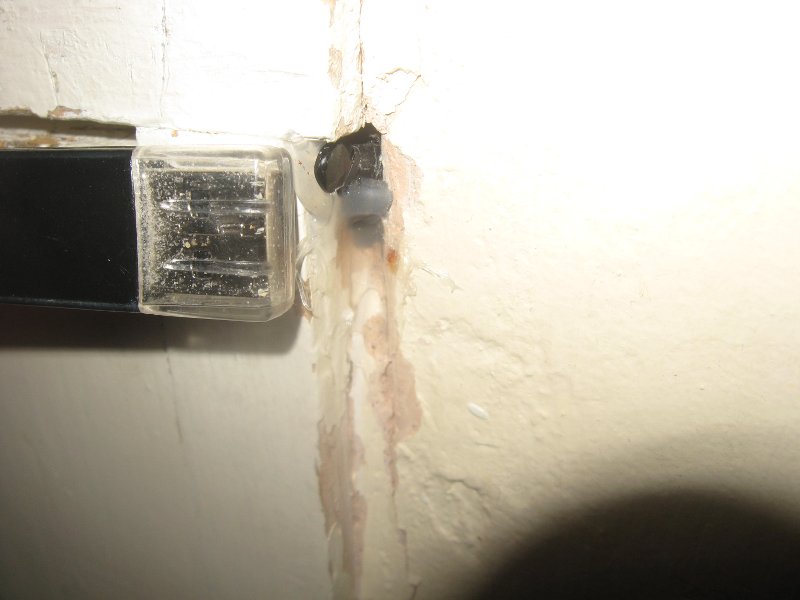| Author |
 Topic Topic  |
|
pluggy
|
 Posted -
09/05/2009
:
22:32 Posted -
09/05/2009
:
22:32
|
I've always been fascinated with numbers, especially numbers relating to the real world. I've mentioned part of this in other threads but I thought I's start a new one. This page is my home server,
http://pluggy.is-a-geek.com/index.html
I've had it in one form or another for several years. Initially it was for controllining my daughters internet usage, but having a computer (albeit a small one that doesn't use too much electric) running all the time just for one purpose grated a bit. So I set to making the box earn its keep. The graphs are pretty much in the order I implemeted them, the first one is over a year old, although its evolved a bit. It shows our internet use. It uses a bit of 'bash' (Linux command line) scripting to extract the amount of traffic running through the server and graphs it against time. I always wanted to know how much bandwidth we used as an household, now I know. The second one grew out of it, it shows which of our computers are turned on and gives clues as to who is using the bandwidth. It scans the network to find which machines are turned on and allocates each one a different number (4, 2 and 1) so the graph shows not just how many are switched on, but which they are.Its Binary in effect, 3 computers gives eight diffent variations of which are turned on, translated in a number from 0 to 7 (all off to all on). I made the server run a webcam which appears on this page:
http://www.pluggy.me.uk/webcams.html
This has appeared in numerous threads on here in the past. I also have a security camera inside the house, although this isn't publicly viewable for obvious reasons,
It was this that caused me to upgrade the eight year old server as it didn't have enough horsepower, the new motherboard
http://www.dabs.com/products/intel-s775-intel-945gc-ddr2-matx-al-5DD3.html?refs=50520-51510000
also uses quite a lot less electricity as well as being much faster. Being a new board it does clever things like being able to monitor its own temperatures, which is where the third graph comes in. This gives me a bit of real world feedback beside the temperatures inside the computer, because they varied with the room temperature and whether I've left the server cupboard door open. I was also interested in electricy usage of appliances and bought a plug in monitor which wou tell you how much electric what you had plugged into was using.
I wanted to apply this to the whole house, all the time which set me down the microcontroller path. A microcontroller is a small computer with 'real world' connections that is frequently built into all kinds of gadgets including said electric monitor. They have been around for a long time but getting hold of a system you could program yourself was often a costly business. I looked at numerous ones at the bottom end of the market (affordable) but they were restrictive and often wouldn't run with anything other than Windows. I eventualy came across the Arduino, which is all open source, including the hardware and is cheap and up to what I wanted to do.
http://www.arduino.cc/
The one illustrated is the original version with RS232 interface, it needs an interface that often isn't fitted on new computers and a seperate power supply. The new ones kill two birds with one stone and uses USB both for communicating and powering the board. The software to control it will run on Windows, Linux and Mac. So I bought one and also bought a current transformer off ebay, which allows the current flowing through a wire to be measured without being physically connected to the circuit. The first step was the red line on the electricity graph, using the Arduino as a digital AC voltmeter to measure the current coming into the house. Which is when I came across the weakness of such devices (at least the 'consumer' devices) and dragged me into the sordid world of apparent power vs real power and power factors. I couldn't get any real correlation between the current and what the meter was saying I was using.
This brought me onto the green line on the electric meter, this one involves a 'reflective object detector' and measures how long it takes for the aluminium disk in the meter to spin (theres a black mark on one position of the disk which is what it tracks) This is convertable with a bit of maths to a direct wattage, I plot them on the same graph and there are often wide discrepancies between the two.
The next step was using the same technology on the Gas meter. Its an 'odometer' type meter but the last digit (1000ths of a cubic metre) has a silvered bit in the centre of the '0'. It just times how long it takes to rotate and works out a figure for wattage. This can only be approximate as there are two unknowns when it comes to calculating your bill (which is in kwh, the same as electric), one is the 'conversion factor' which corrects for the temperature of the gas (cold gas is denser and thus has more energy than warm gas) and the actual energy content of the gas (Mj / m3) which varies on where it comes from and its impurities. I use some figures I pulled off my last gas bill. It works in fairly large steps as the meter only revolves fairly slowly and I don't get more than 3 or 4 revs in a minute. It stops altogether on a frequent basis (unlike the electric meter which thanks to the stuff that runs all the time, never stops.) It has no way of knowing whats happening between the pickup point on the meter, but it does accurately track gas usage over time. If say its 15 minutes for a revolution of the meter, it could be say the hot water being turned on for a few seconds and the combi boiler firing for a short time or a gas ring on low for the whole quarter hour.
The last thing I added was the temperature graphs. These use thermistors and as yet are un graduated, they just plot the voltage measured from the analogue-digital convertor. The thermistors and the resistors in the circuit are wide variation and/or unknown specification so I can't derive accurate figures by calculation. I'm currently reading thermometers against their readings.
They've given me some ideas for controlling the C/H boiler from the microcontroller, to improve its behaviour and/or running costs. It frequently cycles under certain conditions continually firing and stopping which is both distracting and probably isn't doing the boiler any favours. It would be straight forward to stop that using the microcontroller, it also opens up possiblites like adjusting the boiler behaviour depending on the outside air temperature(and thus how quickly it cools down when the heating switches off). Watching it this morning, the room temperature continued to rise for 35 minutes after the boiler shut off due to the heat in the radiators, there has to be room to allow for that with a microcontroller. 
Another option is to be able to switch the heating on or off remotely using a web browser on a mobile phone for example. And timing the boiler to come on at different times depending on how cold it is. It can take several hours to get a really cold house warmed up, and not very long if its mild. Has to be room for savings in there...........
The temperature selection at the bottom of the page doesn't do anything, its a proof of concept - when its live it will be hidden behind a password. 
Edited by - pluggy on 01/07/2009 17:29:58
Need computer work ?
"http://www.stsr.co.uk" 
Pluggy's Household Monitor
|
|
| Replies |
| Author |
|
|
Tizer
|
 Posted - 16/05/2009 : 12:23 Posted - 16/05/2009 : 12:23
"Oh how I wish I were a man then I could understand all this stuff."
I'm a man and I don't understand much of it! If I did, I'd probably have all sorts of solar gadgets going. Instead Mrs Tiz bought a garden `water feature' which bubbles up water powered by a solar cell. She's more with it than me on these things!
 |
Stanley
Local Historian & Old Fart
    

36804 Posts

|
|
 Posted - 16/05/2009 : 15:37 Posted - 16/05/2009 : 15:37
I remember once having a typically male-oriented conversation with a mate about the harmonics of long exhaust pipes when his wife joined in and put us both right. She taught harmonics as part of a higher maths course she ran. Two deflated and apologetic engineers.....
Stanley Challenger Graham

Barlick View
stanley at barnoldswick.freeserve.co.uk  |
pluggy
|
 Posted - 16/05/2009 : 16:00 Posted - 16/05/2009 : 16:00
I feel completely vindicated in my drive for energy savings. I received my gas and electricity bills today and according to their figures, for the same period last year my gas consumption was 88.61 kwh per day average and the electricity was 15.94 kwh per day. For this year average usage for gas was 75.72 kwh per day and electricity was 13.06 kwh per day. I'm something of a stickler for ensuring the bills are from actual readings, not esitmated.
Doing the sums, that is better than 14% saving for gas and better than 18% for electricity.
They are crediting £115 to my bank account..........
Need computer work ?
"http://www.stsr.co.uk" 
Pluggy's Household Monitor  |
pluggy
|
 Posted - 16/05/2009 : 16:39 Posted - 16/05/2009 : 16:39
Back on the hardware front, the C/H boiler is now running under the control of the microprocessor. I'm fine tuning the software, but its working quite well. I have a 'gradient' startup in the morning, and it doesn't actually turn off altogether. I just alter the temperature it maintains, I have it set to run at 15 celcius overnight, which it doen't drop to at this time of year. In winter it will stop the toilet trip at 5 in the morning being really cold and means it doesn't have a long hard slog to get it to temperature. The first step is to get it to 18 degrees, starting at 5:30. On milder nights this time of year it doesn't drop below 18, so the next step is 20, starting at 6:15. Its there by getting up time at 7 ish. The wife works mornings so it goes back to 18 during the day. It doesn't need to fire up much this time of year. It switches back to 20 for her coming home. and up to 21 for the evening watching the telly or whatever. It then steps down again to remind you to go to bed. It doesn't fire up again at this time of year. but it will in winter. Its back down to maintaining 15 by 23:15
It has to beat 21, on and off as was on the thermostat and time clock  . .
Need computer work ?
"http://www.stsr.co.uk" 
Pluggy's Household Monitor  |
Tizer
|
 Posted - 16/05/2009 : 17:06 Posted - 16/05/2009 : 17:06
Stephen, is your temperature control via the microprocessor and boiler only or do you have individual radiator thermostats fitted too to give control over individual rooms?
Your interest in fine tuning the use of power reminds me of a friend I had in the Alfa Romeo owners' club. In the 1980s we all got excited about Slick 50 which you would put in your engine oil. I think it was a silicone compound that improved lubrication and allowed you to get a bit more speed out of your motor. The club members were always discussing how they had got a bit more acceleration or top speed using it but there was this one bloke who had a beautiful little 1960s Guilia family saloon and he used it too - but he was a fanatic for getting the greatest mpg from his car. He would drive at what he judged to be the optimum speed for mpg and he was over the moon with his results from using Slick 50!
 |
pluggy
|
 Posted - 16/05/2009 : 17:50 Posted - 16/05/2009 : 17:50
We've had thermostaic radiator valves since I put the heating system in going on 30 years ago. Since I've started monitoring I've become very aware of them fighting for control with the main thermostat / microconroller.
Whatever you do, don't have one on the radiator in the same room as the main thermostat (or thermistor  ). ).
The optimum speed for best MPG is as slow as you can in top gear. The increased efficiency of the engine at higher powers only ever partly compensates for the exponential increase of aerodynamic drag with speed. Mechanical friction is linear and it only becomes a significant factor at very low speeds. (Below 20 or 30 mph).
Its all about speed versus pressure on the accelorator. Drive slowly, allow the car to accelerate under gravity (going down hill) and allow speed to fall away climbing rather than putting on more gas to maintain speed (within limits of course). Slow down using the engine rather than the brakes (modern cars with computerised fuel injection don't use any fuel on the overrun) and don't speed up and slow down excessively at corners.
Need computer work ?
"http://www.stsr.co.uk" 
Pluggy's Household Monitor  |
Stanley
Local Historian & Old Fart
    

36804 Posts

|
|
 Posted - 17/05/2009 : 09:00 Posted - 17/05/2009 : 09:00
Low revs, high torque. Us old drivers with 150hp from a Gardner 6LX learned that. The most efficient diesel ever built and it did 13mpg with 32 tons. It got it from low revs (1750rpm) long stroke and a flat torque curve. Small capacity engines aren't always the cheapest.
Stanley Challenger Graham

Barlick View
stanley at barnoldswick.freeserve.co.uk  |
Tizer
|
 Posted - 17/05/2009 : 10:44 Posted - 17/05/2009 : 10:44
We have thermostatic radiator valves throughout and no room thermostat (or effectively no room stat - the plumber left it in a hidden position and set so that the system goes all the time the controller is in the `on' position. The only problem we find is that the radiator stats overshoot and the rooms tend to get too hot then too cold. A lot of energy could be saved by encouraging manufacturers to sell more precise thermostats.
I'm pleased to hear what Stephen says about driving style because it matches my own assumptions. Also what Stanley says about torque versus revs. I drive a medium size car (Ford Focus) but chose the 1.8 engine which has a lot of torque because I felt it was more efficient when driven carefully.
When considering factors affecting MPG what about the increased time spent on the road when driving at a lower speed? The lower speed means less petrol used per minute, but more minutes on the road.
 |
Bradders
|
 Posted - 17/05/2009 : 12:59 Posted - 17/05/2009 : 12:59
An Old mate of mine used to drive a big Volvo Estate (antique dealers special). In a "previous life" he'd been a service engineer for JCB at Uttoxeter .
He told a group of us one day that he kept his fuel tank full ,or well topped up, because he was always worried about SLUDGE from the bottom of the tank blocking the filters and carb......Common cause of breakdowns on machines on site, apparently.
When we asked him how long he'd been doing it, "about 15 years" was the answer .
"How big is the tank on a Volvo ?" somebody asked.....(I forget the exact answer...but I guess it would have been about 20 gallons).
And"How much does petrol weigh?"
You could see the "penny dropping"
At (approx) 10lb per Gallon, Brian had been carrying at least 1cwt of unnecessary extra weight around all that time ,and possibly more , but ..........as he said ruefully........"I NEVER HAD A BLOCKAGE".......!!!
Didn't carry on doing it though...eh.
BRADDERS BLUESINGER  |
Stanley
Local Historian & Old Fart
    

36804 Posts

|
|
 Posted - 17/05/2009 : 13:56 Posted - 17/05/2009 : 13:56
The main argument for a full tank in a high mileage vehicle like a wagon is that a tank full of fuel isn't condensing water out of the air with changes of temperature. Amazing how many vehicles were stopped with ice in the filters in cold weather but always blamed it on 'waxing'. Always filled up at night after a run, that's when the condensation happened.
Stanley Challenger Graham

Barlick View
stanley at barnoldswick.freeserve.co.uk  |
pluggy
|
 Posted - 17/05/2009 : 14:41 Posted - 17/05/2009 : 14:41
I wait until the fuel light comes on and fill it to the top. I have better things to do than pull into fuel stations for a few quids worth. I reset the trip counter when I fill it as it makes it easy calculating how fuel efficient it is. 3 Cylinder turbo diesel in a super mini (Skoda Fabia), I'm disappointed if I don't average 60+ mpg. I have games with the trip computer going to and from work to see how high I can make the MPG meter go. Does better in warm dry weather, with a following wind and if you get stuck behind an agricultaral vehicle doing 35mph most of the way........... 
Modern diesels are so confident that they won't freeze up, they put fuel coolers on 'em. (Not actually for that reason, its a by product of electronic injection, a common fuel rail and plastic fuel tanks). Mines nicely positioned to catch the spray from the offside front wheel.
Need computer work ?
"http://www.stsr.co.uk" 
Pluggy's Household Monitor  |
pluggy
|
 Posted - 17/05/2009 : 17:27 Posted - 17/05/2009 : 17:27
Back to the topic, heres a few piccies :

The microcontroller board with USB pen drive for scale

The microcontroller with my wiring sub-board.

The 'Ebay' current transformer on the meter 'tail' cable. The white thing on top is a large resistor (the burden resistor) The small wires are signal wires running to various sensors in the meter cupboard.

The sensor stuck on the electric meter
The glass isn't cracked, its a thread of glue. Anyone familiar with hot melt glue will testify its easy to remove from hard surfaces 

The sensor stuck on the gas meter.

Both of the above look like this when not covered in wires and glue

The inside thermistor (the small round black thing) with the end of USB pen drive for scale. Its barely noticeable at real size.
Need computer work ?
"http://www.stsr.co.uk" 
Pluggy's Household Monitor  |
Stanley
Local Historian & Old Fart
    

36804 Posts

|
|
 Posted - 18/05/2009 : 06:49 Posted - 18/05/2009 : 06:49
I'll bet your meter readers are intrigued!
Stanley Challenger Graham

Barlick View
stanley at barnoldswick.freeserve.co.uk  |
pluggy
|
 Posted - 18/05/2009 : 11:32 Posted - 18/05/2009 : 11:32
I don't think we've actually had a meter reader inside the house in several years. We're invariably out when they call and we stick a card in the window or go online and give them the readings.
Need computer work ?
"http://www.stsr.co.uk" 
Pluggy's Household Monitor  |